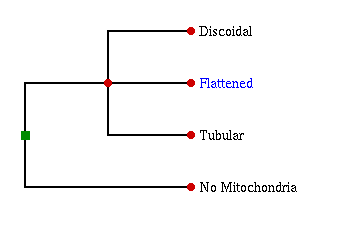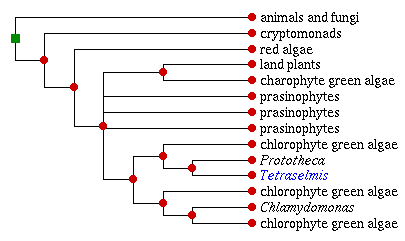
Tetraselmis is a sizeable genus (more than 50 species) of green flagellates. Most species are known from inshore marine environments, tidepools in particular, but a few freshwater species are also known, and some marine invertebrates harbor exo- or endosymbiotic species. Tetraselmis is an ancestral genus, with many of the morphological features of the "prasinophyte" grade of basally-derived green plants. Its true phylogenetic position appears to be near the base of one of the main clades of "chlorophyte" green algae. Certain species of Tetraselmis (which may be listed under other names, most often Platymonas or Prasinocladus), and the closely related genus Scherffelia, are significant experimental organisms in cell biology and plant physiology. They featured prominently in the discovery and subsequent characterization of the centrin (=caltractin) family of cytoskeletal proteins. Some species are also important in aquaculture as food organisms for juvenile fish and shellfish.
 |
Postulated global eukaryote phylogeny based on presence or (ancestral) absence of mitochondria, and shape of mitochondrial cristae. Tetraselmis belongs to the flattened clade. |
 |
Postulated phylogenetic position of Tetraselmis, inferred from molecular and morphological data. Branch lengths are arbitrary and do not reflect phylogenetic distance. |
Return to summary information